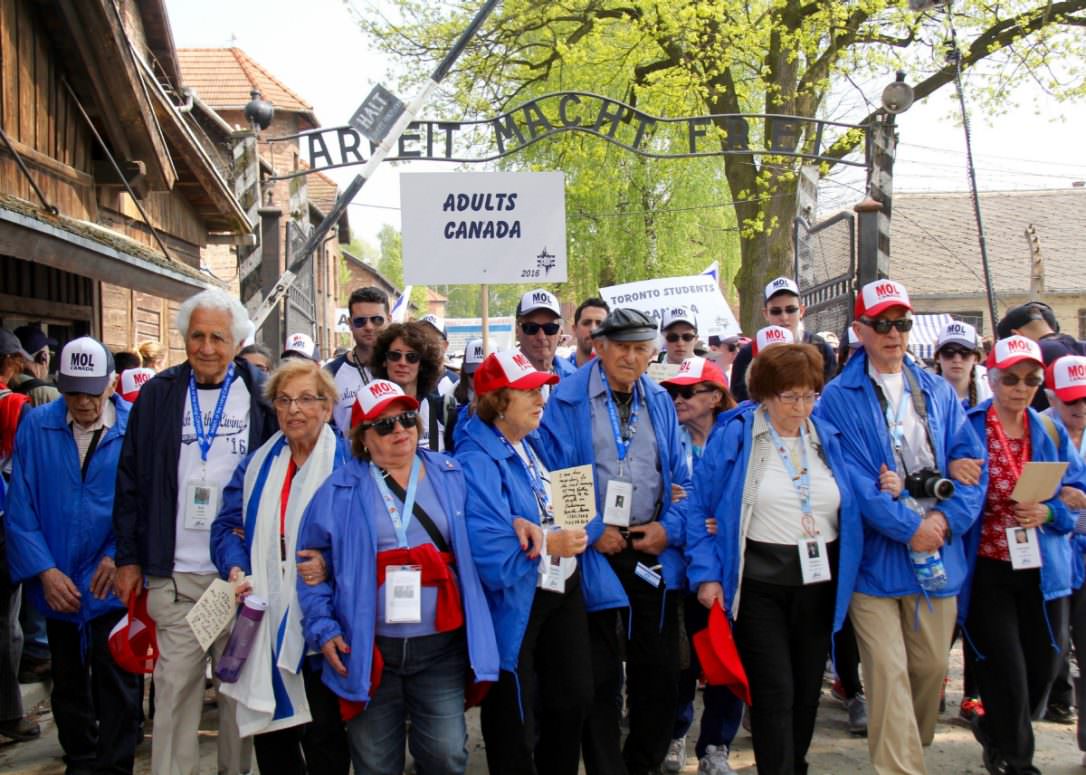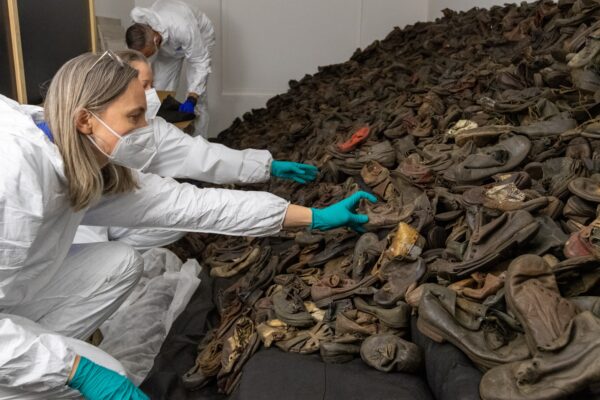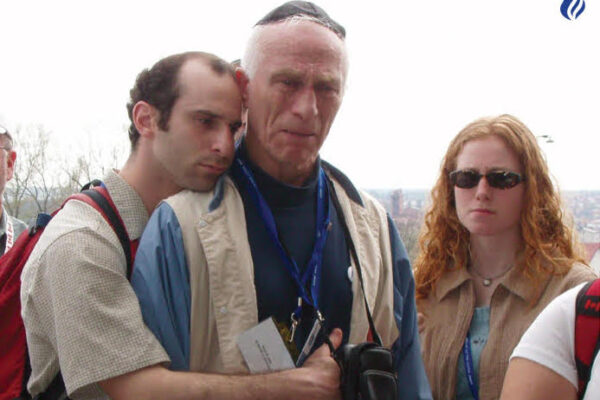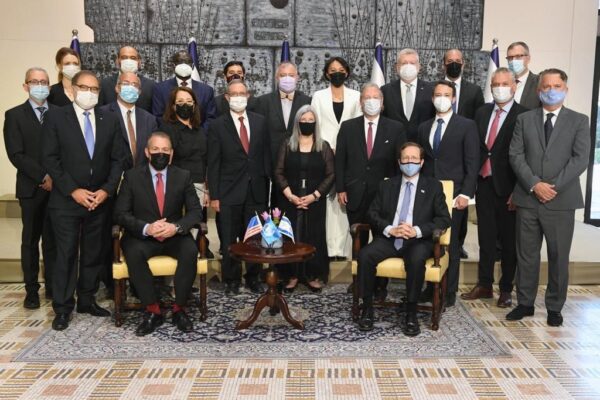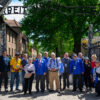
Holocaust survivors from Toronto walk through the infamous gates of Auschwitz during the March of the Living. (CATHERINE PORTER / TORONTO STAR) |ORDER THIS PHOTO
OSWIECIM, POLAND—Bill Glied leads a block of paraders, arm in arm with his daughter Tammy.
The landscape bursts with joy around them — chestnut trees wave their delicate blooms, lilacs perfume the air, birds sing and pirouette overhead. Nature’s beauty is a stark contrast to their march’s purpose: to retrace the Shoah — the Hebrew word for the Holocaust.
It should be raining ash.
Back then, seven decades ago when he was a slave labourer, Glied avoided being at the front of a pack like this.
There, he was exposed to both the knifing cold that cut through his thin, striped pyjamas and the violent outbursts of the kapos, or prisoner-guards.
“You wanted to be in the middle, where you were hidden,” he tells his daughter. “When it was very cold, we would hug each other from front to back.”
Now 85, Glied is among the dwindling Holocaust survivors who return every year to the sites of their own imprisonment and the murder of their family members. Their goal is to teach students about what millions of European Jews endured during the Second World War.
The annual, two-week pilgrimage that began in 1988 is called the March of the Living. The first week, the group visits the sites of Jewish death in Nazi-occupied Poland — ghettos, concentration camps and death centres. The second week, they go to Israel to celebrate Jewish life.
The name is symbolic, but the trip includes a three-kilometre march between two arms of the Nazis’ most notorious camp — Auschwitz and Birkenau. Some 1.3 million people were murdered here over five years, 1.1 million of them Jewish.
At its peak, 9,000 people were gassed to death daily in Birkenau, their bodies burned in adjacent ovens. It is considered the world’s biggest Jewish cemetery.
The parade is both sombre and joyful. People from as far as Japan and Chile carry letters for their lost relatives that they leave on the train tracks. They march hand in hand, their love a purposeful response to the Nazis’ hate.
Walking not far from Glied is another Torontonian, Nate Leipciger, linking arms with his 25-year-old grandson, Jason Green. Like Glied, Leipciger was imprisoned in Birkenau before being packed into a cattle car and sent to Germany. The last time he saw his mother and sister Linka was by the train tracks. They were sent to the gas chambers.
Near the end of the war, when the Allied forces were pushing in on two fronts, Nazi SS guards evacuated the slave labour camp where he was imprisoned with his father, and marched them for four days through the snow, without food or water.
It was the tail end of the march that frightened him, Leipciger recalls in his 2015 memoir, The Weight of Freedom. Straggling prisoners who sat down from exhaustion were shot in the head. Leipciger recalls the hollow sound made by the heads of dead inmates bouncing along the ground as he resentfully dragged them onto burning pyres. He was resentful because he wanted to save his strength for survival.
“We lost our humanity,” says Leipciger, 88.
Every year, he finds the journey more difficult, physically and emotionally. But, even after 15 years sitting on the international board of the Auschwitz-Birkenau State Museum, Leipciger thinks the march is the Shoah’s best education program. Hearing the stories first-hand from a survivor, in the very place where they happened, has a chilling impact. He is determined to touch as many hearts as he can.
So when he got a call from the Prime Minister’s office, asking that he accompany Justin Trudeauon his first visit to a Nazi death camp this Sunday, he agreed to return once again to Poland.
The death of Nobel Peace Prize winner and iconic Auschwitz inmate Elie Wiesel last weekend has heightened his sense of urgency. Survivors are running out of time to teach the march’s lessons: never forget and never again.
Never forget what happened to the Jews, for in Wiesel’s words, that would be to kill them a second time. Never again will Jews be slaughtered without a vigorous defence by Israel. And more broadly, never again should humanity stand by as innocent people are murdered by their neighbours, their occupiers or their government.
Except the world has stood idly by many times since the Holocaust. It stood by as Hutus slaughtered Tutsis in Rwanda, and it is doing so again as Syrian President Bashar Assad targets hospitals and primary schools with missiles.
Trudeau’s government has been sensitive to the plight of Syrian refugees, bringing 25,000 to Canada within four months of his party’s election last fall. But that number is minuscule compared with the more than one million refugees and migrants who poured into Europe last year alone.
But a backlash is growing. Last March, Polish Prime Minister Beata Szydlo publicly announced her country was closing its doors to refugees.
Openly racist and anti-Semitic groups parade in cities across Europe, while governments like Szydlo’s remain muted.
So what does the March of the Living mean in the face of rising xenophobia and nationalism — the Shoah’s deadly twin ingredients?
It’s a question Leipciger asks regularly. And which Trudeau may well ponder.
“The world has not changed,” Leipciger says. “That’s the tragedy. We haven’t learned anything.”
Justice through generations
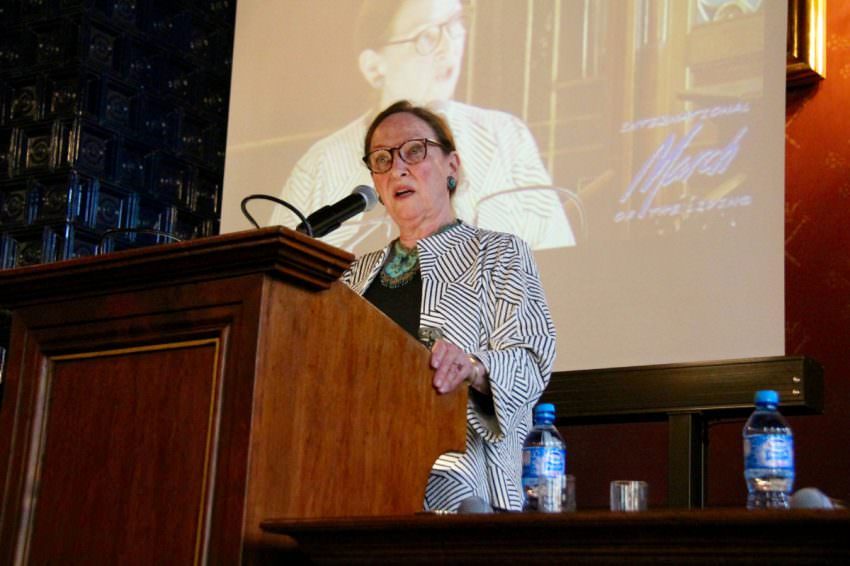
Canadian Supreme Court Justice Rosalie Silberman Abella speaks at a legal symposium on the Holocaust at the Jagiellonian University of Krakow, where her father studied law. (CATHERINE PORTER/TORONTO STAR)
Canadian Supreme Court Justice Rosalie Silberman Abella wrestled with the same issue the day before, standing at a wooden lecture in a gilded room of Krakow’s ancient Jagiellonian University.
The target of her sharp critique though was the United Nations.
“The UN was the institution the world set up to implement ‘never again.’ Its historical tutor is the Holocaust. Yet it seems hardly to have been an eager pupil. What was never supposed to happen again has again and again and again,” she said.
Abella was delivering the keynote lecture at the Nuremberg Symposium — a daylong examination of both the Nazis’ Nuremberg laws, which codified racism in 1935, and the world’s legal response to the Holocaust, the Nuremberg trials.
Her voice cracked a few times. The subject and the setting were very personal to her.
Abella’s father, Jacob Silberman, won a scholarship to study law at Jagiellonian University in 1930. He stood during first-year lectures, refusing to sit in the seats reserved for the few Jews permitted by a university quota system.
He was clearly brilliant — approved to become a judge before he had even practised law. But a month before his scheduled judicial exam, Hitler’s troops invaded Poland. He and his newlywed wife, Abella’s mother Fanny, survived three years in concentration camps. His parents, three brothers and their 2-year-old son were murdered at Treblinka.
Once admitted to Canada in 1950, Silberman learned he couldn’t join the Canadian bar until he gained citizenship, a process that would take five years. He had a family to raise, so he became an insurance agent and never practised law again.
The moment she heard that story at age 4, she told the room, was the moment she decided to become a lawyer herself.
After the war, her parents had moved to a displaced persons camp in Stuttgart, Germany, where both Abella and her younger sister were born. Their father taught himself English and was hired by Americans as a defence counsel in preparation for the trials of leading Nazis.
“I never asked my parents if they took any comfort from the Nuremberg trials … but they would have preferred by far, that the sense of outrage that inspired the Allies to establish the tribunal at Nuremberg had been aroused many years earlier,” she said in her speech.
The genocide that saw six million murdered because they were Jews should have inspired “a desperate and unquenchable thirst for enforceable international norms that make human rights abuses intolerable,” she said. But that has not been the case.
“Consider some of the events that have occurred around the world since then, notwithstanding the most sophisticated development of international law, treaties and conventions the international community has ever known, all stating that rights abuses will not be tolerated,” she continued.
Inaction from UN
What is the solution? Abella did not offer one in her speech. But she did say it is time to ask “the hard questions about the United Nations.”
It is a sentiment echoed by Irwin Cotler, the former Canadian justice minister and renowned international human rights lawyer, who once counselled Nelson Mandela and Natan Sharansky. Now 76, Cotler co-chaired the international legal symposium, which was funded in part by the March of the Living.
Cotler has been a vocal critic of UN inaction to protect Syrians against Assad’s security forces since 2012, months after an international commission confirmed the government was committing “crimes against humanity.” By 2013, when Assad began gassing his citizens with chemical weapons — a clear war crime — Cotler again cried for the UN to enact its Responsibility to Protect doctrine. However, even basic resolutions calling for economic and diplomatic sanctions against Syria died on the Security Council floor, vetoed by Russia and China.
By April, more than 4.8 million refugees had fled Syria, and the United Nations had raised only 22 per cent of the $4.5-billion (U.S.) annual budget needed to care for them.
“We are living in the time of bystander leadership,” Cotler said in an interview.
Cynicism, however, is anathema to Cotler. His formula for countering it is involvement. So at the end of the conference, he and all the participants signed a “Never Again” declaration — essentially a personal Responsibility to Protect pledge.
It committed the signer to “never again … be indifferent in the face of mass atrocity and impunity.”
Cotler plans to circulate it to politicians internationally. He sent it to Trudeau again, in light of Sunday’s visit to Auschwitz.
Most Holocaust survivors on the March of the Living agreed with Cotler that Canada should take in many more Syrian refugees.
“It was hard when we wanted to run and no one would let us in,” says Reny Friedman, an 81-year-old born in Holland and hidden from the Nazis by French nuns. “We’re remembering the Holocaust — there are lots of holocausts going on in the world.
The day after the symposium, Abella and Cotler joined the 10,000 people marching from Auschwitz to Birkenau. Before the march, Cotler took two Rwandan Supreme Court justices who had spoken at the symposium through Auschwitz buildings that now serve as a museum.
They stopped before a jumble of 80,000 shoes, piled behind two walls of glass. Most were gathered outside the gas chambers, after their owners had carefully stepped out of them to go for what they thought were showers.
Some sit side by side, as if beneath the lip of the bed, waiting dutifully for the weight of familiar feet.
The view of those shoes is a chilling reminder: each statistic of genocide is personal.
That day gave Cotler another idea — to invite not just judges, but hundreds of elected officials from around the world to join next year’s march.
Visiting these Nazi sites, they might better understand the importance of not just saying “never again” but acting on it.
So far, he has commitments from legislators in the United States, France, Hungary, Norway, Britain and Canada.
“Sometimes,” said Cotler, “you need to get a taste of injustice to have urgency to fight against it.”
Haunting journeys home
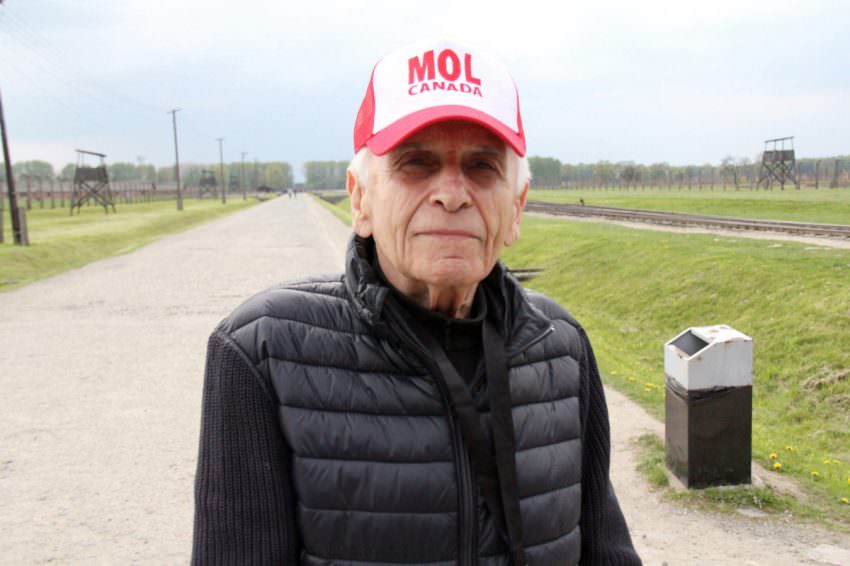
Survivor Max Eisen stands near the gates of Birkenau, where his mother and younger siblings were killed. Eisen survived as a slave labourer. (CATHERINE PORTER/TORONTO STAR)
OSWIECIM—Max Eisen leafs through the giant pages of the Book of Life — 16,084 pages listing more than four million identified victims of the Holocaust. He is looking for his mother’s name: Ethel. She was killed in the gas chambers with his three younger siblings. The thought that haunts him is her anguish at not being able to protect them when the gas came on. “This happened in the cultural world that was Europe. And hundreds of millions of people stood by,” says Eisen, on his 20th March of the Living. “Bad things happen when people are standing by and saying it’s not our business.”
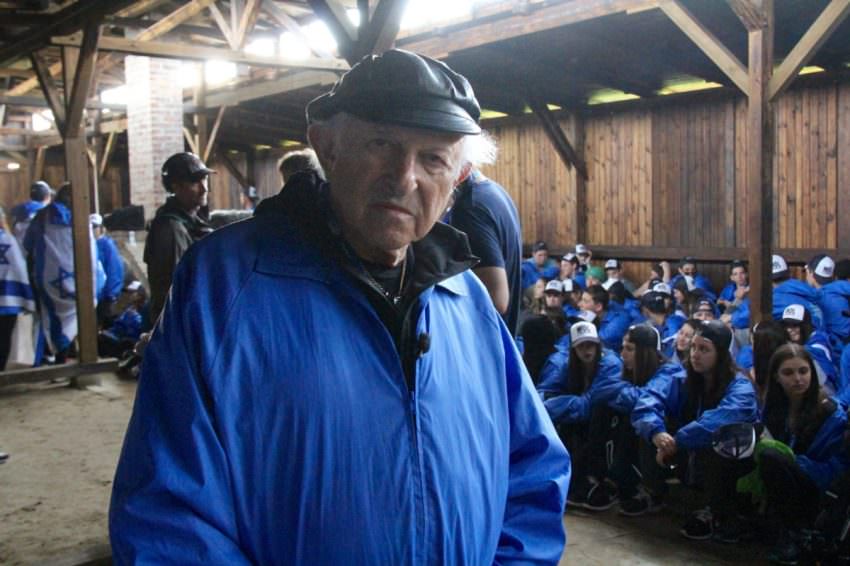
Nate Leipciger addresses a group of Jewish high school students inside one of the barracks at Birkenau, where he was imprisoned for 88 days during the war. (CATHERINE PORTER/TORONTO STAR)
BIRKENAU—“Welcome to my home,” says Nate Leipciger, standing in a wooden barrack at Birkenau. When he arrived here, he was 15 — a little younger than most of the teenagers huddled before him, listening. That first night, a kapo told him life expectancy here was four months. “Why was I here? I didn’t have a trial,” he says. His story, he tells the teens, has a price. “Now you’ve heard it, you will have to retell it.” Also, he asks each marcher to carefully put together a package of clothing to donate to someone in need. He wants them to become active citizens.
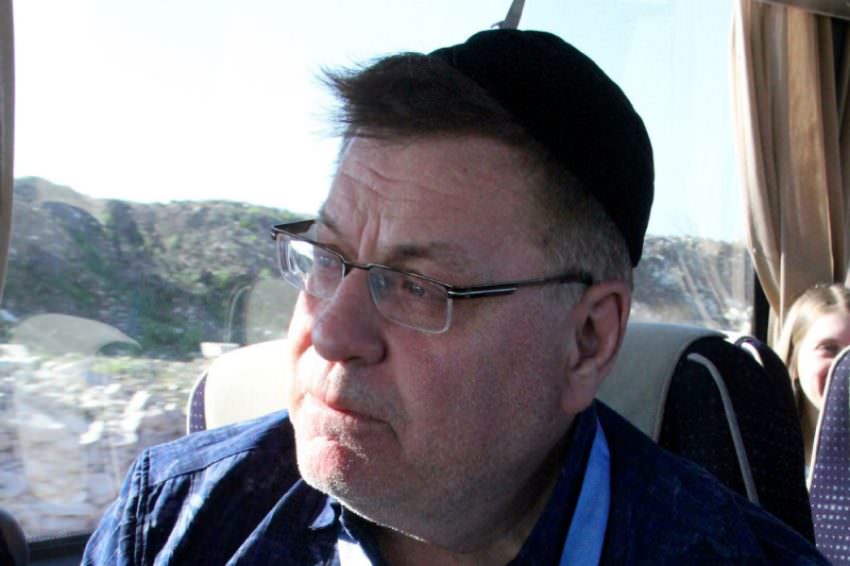
Michael Korolnek holds up the Yiddish newspaper, printed in July 1946, that lists the 42 Jewish Holocaust survivors of Kielce who were killed in a pogrom, a year after the war. (CATHERINE PORTER/TORONTO STAR)
KIELCE— “You survived the war, where are you going to go? You go back home,” says Michael Korolnek. His uncle found his home had been stolen by a Polish family, so he moved to nearby Kielce. The uncle was among the 42 Holocaust survivors who, a year after the war, were killed by a mob. The pogrom made international headlines, including a 1946 Yiddish newspaper his father brought to Canada from a displaced persons camp in Germany. He gave it to Michael days before he died. It is a symbol of remembrance, Korolnek says. “It’s all he had left of his brother.”
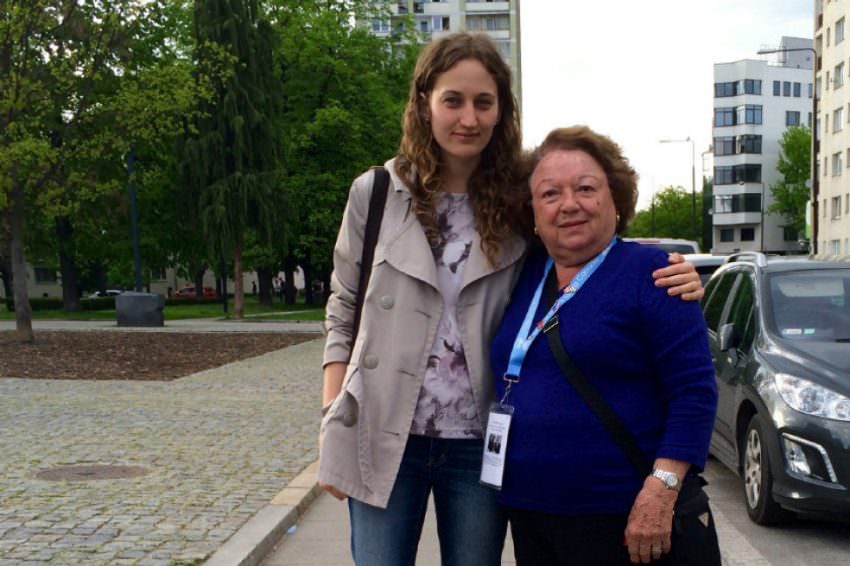
Polish medical student Marta Kornacka puts her arm around Anita Ekstein, whose life her family hid during the Holocaust, (CATHERINE PORTER/TORONTO STAR)
WARSAW—Marta Kornacka put her arm around Anita Ekstein, whose life her family saved during the war. Ekstein was a child; today she’s 81. “She’s like my grandma,” says Kornacka, a 24-year-old Polish medical student. Her family hid Ekstein for three years. When soldiers arrived at the house one day, her grandmother threw Ekstein out the window. Had she been found, the whole family would have been shot. She survived by hiding in the outhouse. “For me, she is a vivid reminder,” says Kornacka, “when you do good things, you can always get a good return.”
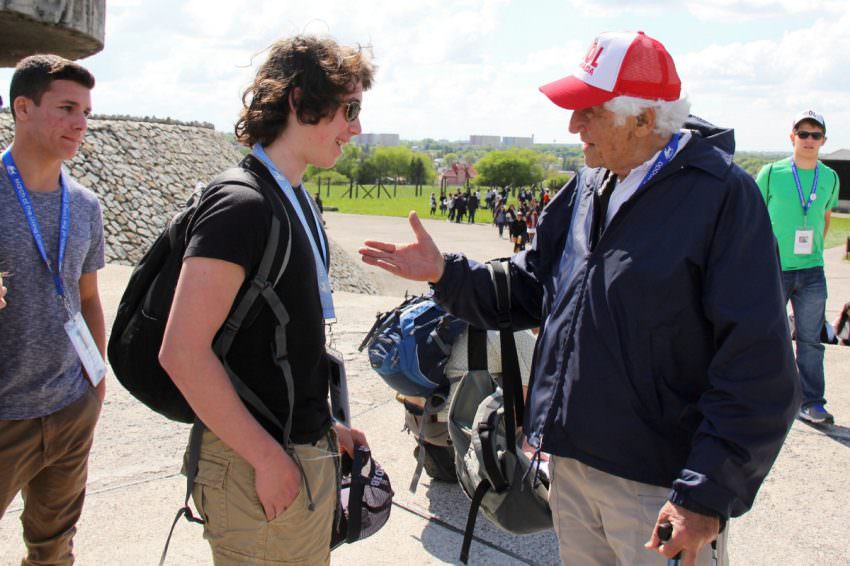
Holocaust survivor Bill Glied is greeted by a young Torontonian at Majdanek, a death camp built by the Nazis in occupied Poland, where 80,000 Jews, Roma, Soviets and homosexuals were murdered during the.Second World War. (CATHERINE PORTER/TORONTO STAR)
LUBLIN— “Why are you a Jew?” Bill Glied asks the teenagers, standing before a mound of human ashes at Majdanek, a former Nazi death camp. It’s a question patients discussed in the krankenlager — sick camp — where he was with his father, who died from typhoid fever eight days before American soldiers arrived. Glied has thought about that question for 70 years. “I’m a Jew,” he says, “because I believe that all human beings are created in the likeness of God and therefore all racism is foreign to me … because I have an obligation to help and be hospitable to strangers, to visit the sick … and most of all, to make peace between people.”
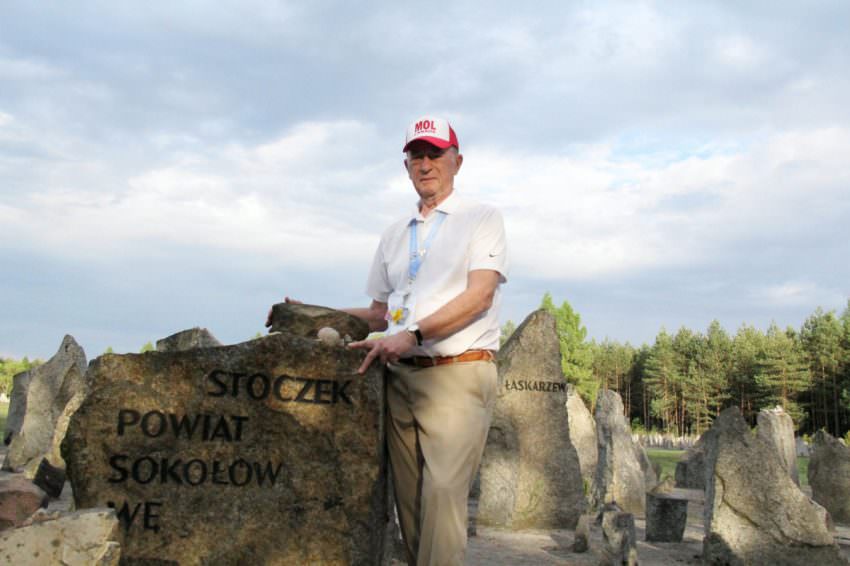
Sol Nayman stands by the stone for his Polish hometown, Stoczek, in the memorial site of Treblinka, his “neighbourhood death camp.” (CATHERINE PORTER/TORONTO STAR)
TREBLINKA—This was Sol Nayman’s first trip to Poland since 1939, when his family was sent by Soviets to a work camp in northern Russia. He trembled on the plane from Toronto. He dreaded most visiting Treblinka, “my neighbourhood death camp, 35 kilometres from the town where I was born.” Some 900,000 people were gassed to death here in just 13 months, most just two hours after arriving. Instead of breaking down again, Nayman was soothed by the march’s secret ingredient — unabashed affection. A group of Toronto teenagers prayed with him and hugged him at the tomblike rock marking his childhood village. “I feel a big release,” says Nayman, 80. “It’s the least (sad) I’ve felt this whole trip because of these kids and their love and support.”
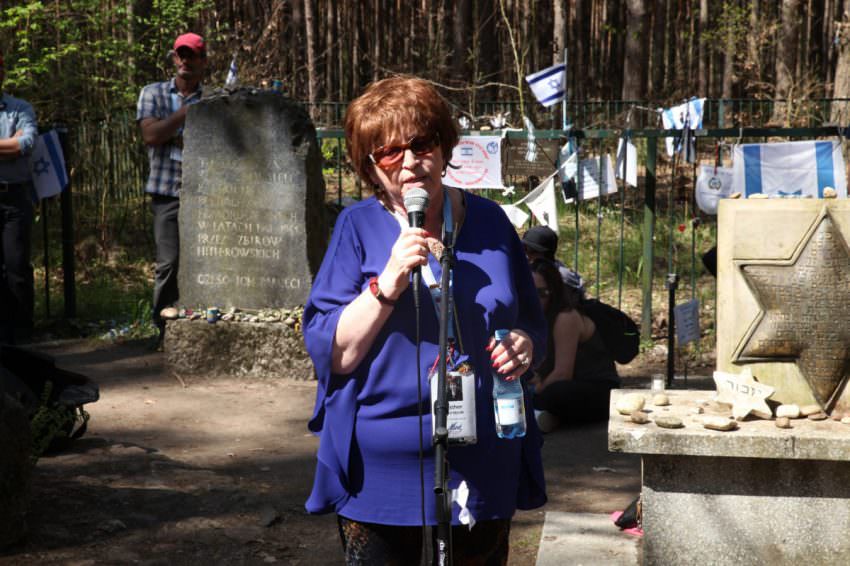
Esther Fairbloom tells her survival story to teenagers gathered in the Lushowa Forest, where some 2,200 Jews from nearby Tykocin were shot and buried in three giant pits in 1941. (COURTESY OF AARON DANIEL MANDEL)
TYKOCIN—Esther Fairbloom stands in the Lushowa Forest, encircled by three mass graves where the 2,250 Jews of nearby Tykocin were shot by Nazis in 1941. As a baby, she was given to a convent of nuns who hid her in the basement of a church, often in a chest. “I lost the ability to walk and talk — malnutrition will do that to you,” she says. No survivors knew her name, so she was renamed by an aunt who adopted her — “in Jewish history, Esther means hidden.” It took them years to be accepted to Canada, which closed its doors to Jewish refugees until 1948. “One Jew was too many,” she says. “It’s like a knife in my chest.”
Originally published HERE
